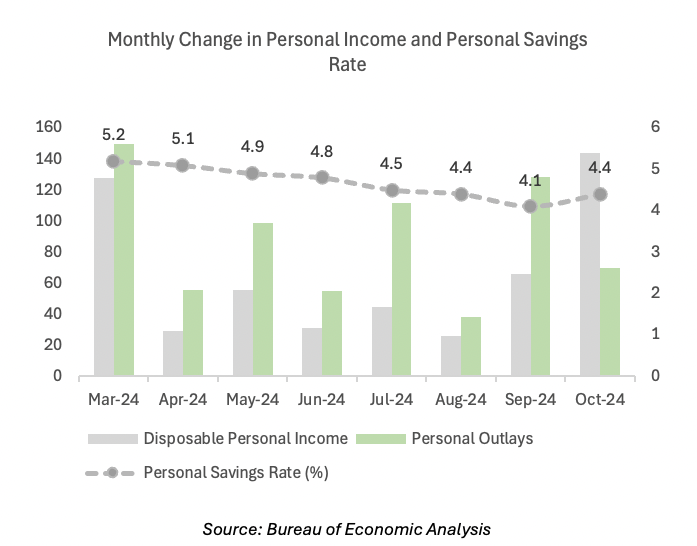
The Personal Consumption Expenditures Price Index for October showed a re-ignition of inflation.
The PCE increased at an annualized 2.3% rate, which is a quickening from the 2.1% pace in the previous month, the Bureau of Economic Analysis said Wednesday (Nov. 27). As measured month over month, the 0.2% gain represents the second straight month of inflation at that level.
“Prices for goods decreased 0.1% and prices for services increased 0.4%,” the BEA said.
Food prices were up less than 0.1%, which may indicate at least some relief in the grocery aisle (at least in terms of the pace of increases).
Personal consumption expenditures in the non-durable goods subcategory fell at a 0.2% annualized monthly rate, its third decline in six months.
Expenditure on durables grew at an annualized 0.3%, which indicates that large-ticket items became a bit more expensive. Data showed a 0.6% bump up month over month for recreation services, a 1.4% dip in the PCE for apparel and footwear, and a 0.3% gain for food services and accommodations.
The latest data on GDP, also released by the BEA Wednesday, indicated a deceleration in the growth of the economy, spending and saving. October’s PCE data indicated at least some bump up in consumers’ fortunes. Personal income was 0.6% higher, and that pace was roughly matched by growth in disposable personal income, which is net of taxes.
 October’s Savings Rate Bump
October’s Savings Rate BumpThe personal saving rate — personal saving as a percentage of disposable personal income — was 4.4% in October. The saving rate, however, is below what was seen earlier in the year, when the savings rate was north of 5%.
The fact that inflation ticked up in October calls into question the timing of further rate cuts by the Federal Reserve. Rate cuts help bring down the cost of debt by lowering the interest rates charged on that debt. (Stocks fell Wednesday, in part, on sentiment that rate cuts may be pushed out.)
As for the debt loads themselves, the BEA said in a separate table that personal interest payments (which include payments on card debt) were just under $550 billion in October. We haven’t been below the $550 billion level since the spring, but that line item is still above the $542.9 billion seen as recently as March.
Higher levels of debt, including card-associated debt, have kept interest payments high. The latest Federal Reserve Bank of New York’s reading on household debt showed that coming into October, total household debt during the third quarter increased 0.8% ($147 billion) to $17.94 trillion.
As Thanksgiving gives way to Black Friday, Cyber Monday and a spate of promotions, one-quarter of consumers said they are less likely to shop at deal events this year. Thirty-nine percent of shoppers said they are somewhat or much more likely to wait this year than last to buy a product they immediately need. About 59% of consumers said they will either spend the same amount or less than they did last year.